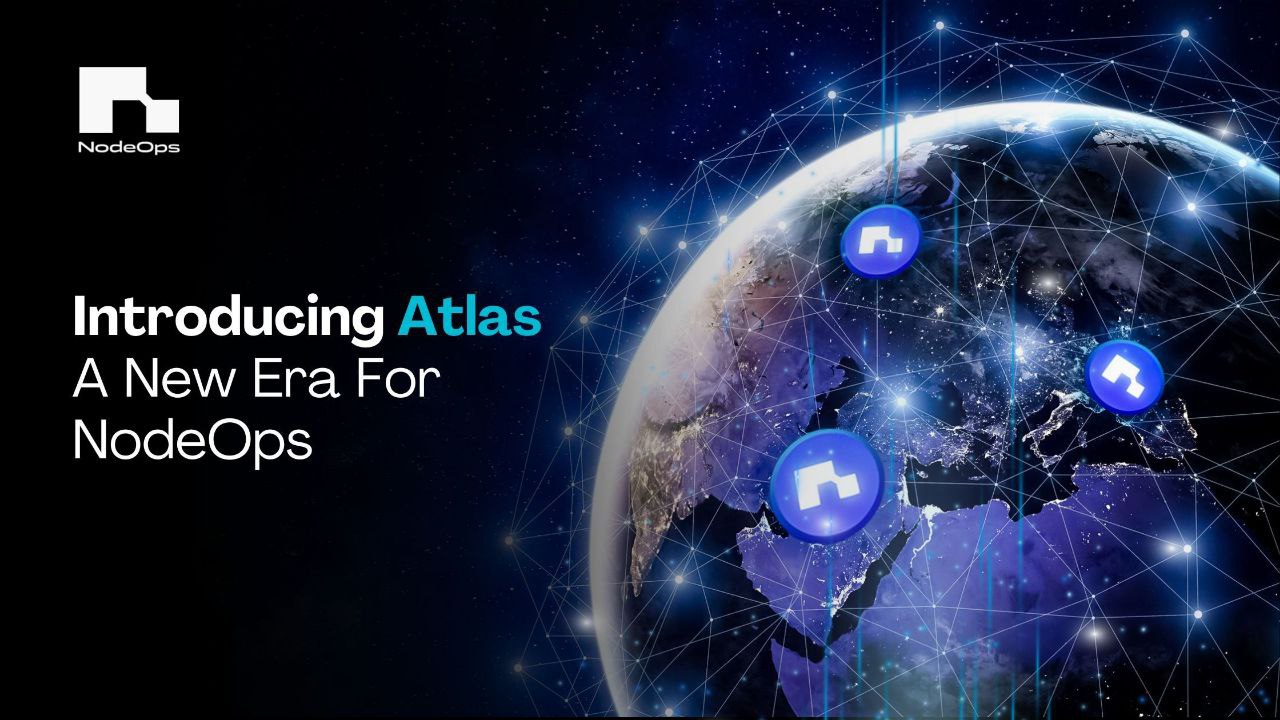On 31 July 2024, Web3 node infrastructure provider NodeOps revealed Atlas. Atlas is our decentralized node orchestration protocol, conceived after several months of researching crypto-native mechanisms to address some significant challenges plaguing the Web3 ecosystem.
The blog talks about these challenges and how Atlas solves them.
Who are we?
Before diving into Atlas, we want to tell the reader who might be unfamiliar with us what we do here at NodeOps.
Think of NodeOps as a Node-as-a-service platform from which blockchains and protocols can bootstrap their node networks. Simply put, NodeOps provides a seamless and user-friendly platform for running node sale campaigns for Web3 projects.
NodeOps provides several advantages over other similar projects.
Its unique, user-friendly design offers a seamless transition from purchasing node to deployment to monitoring.
It can support any node deployment, including validators, light clients, RPC nodes, and archive nodes, for all projects, such as DePIN, AI, Gaming, Layer 1, Layer 2, and rollups.
NodeOps uses AI in the form of its custom LLM to automate the node deployment process. It also provides an AI-powered playground where developers can use a "Try it" feature to ask questions, learn more about the protocols, and run little code snippets.
Finally, NodeOps provides a robust dashboard from where node operators can actively monitor their nodes.
Since our launch in June 2023, we have successfully deployed over 34,000 nodes for over 30 blockchains and protocols. This experience exposed us to some critical problems with the "load-bearing walls" of Web3, its node infrastructure.
What are these problems?
Everyone in the crypto space is familiar with the blockchain trilemma. It comprises three crucial aspects that define every public blockchain and protocol: Decentralization, which means how distributed its physical node network is; Security, which means how secure the chain is against a 51% or a 33% attack; and Scalability, which addresses the capacity of the blockchain to scale to increase in demand.
Figure1: The Blockchain Trilemma
It is called a trilemma because a blockchain protocol can only truly achieve two of these three and must find indirect ways to reach the third.
Being in the thick of the action as a node infrastructure provider, we have first-hand experience with the level of complexity involved in creating a new node network, let alone one that is decentralized and secure, and so we focussed on three main challenges.
How can we help create a decentralized and secure node network?
How do we ensure its reliability? &
How do we enable Web3 to use such a network?
So, we took it upon ourselves to find answers to these three questions in a way that would promote trust and openness and inspire other node infrastructure providers.
Our Solution: Atlas
Atlas brings decentralization and economic security to node infrastructure.
It is our new decentralized and permissionless orchestration layer, promising to transform NodeOps from a node infrastructure provider into an open and vibrant marketplace for decentralized node infrastructure and economic security.
Like the mythological titan, Atlas will enable NodeOps to shoulder the weight of expectations from new blockchains and protocols seeking a robust node network as Web3 grows as an industry.
Let's briefly examine how Atlas addresses the three problems we saw earlier.
With the help of Atlas, existing Ethereum node operators or stakers will now be able to join our pool of compute providers. This will add much-needed decentralization to the node networks, removing the single points of failure prevalent with current cloud deployments. Since these are existing validators, they can restake their current staked ETH via EigenLayer and provide additional economic security for node networks.
Atlas has been designed to check the reliability and availability of new and existing compute providers without centralized control. With the help of an independent network of light clients called the NodeWatch network, Atlas will enable constant monitoring of all providers.
To create demand for decentralized and secure node infrastructure, a marketplace must exist where those seeking such a network and those providing these resources can meet and transact. With Atlas, NodeOps will now evolve into a permissionless market for such requirements. Blockchains and protocols looking for a decentralized and secure node network can create a proposal for the NodeOps community to vote on.
Figure2: The NodeOps Ecosystem
So, what changes can you expect to see in NodeOps?
Blockchains and protocols can now access better, more decentralized node infrastructure for their node networks.
Blockchains and protocols will now have the option to access the economic guarantees made available because of restaking on EigenLayer.
The NodeOps community will be empowered to vote on proposals created by those seeking node networks and economic security.
dApps can now raise liquidity for their projects.
Individuals and groups can now share their hardware resources for node deployments by becoming Operators of the NodeOps AVS in return for incentives.
Token holders can become liquidity providers for attractive yield opportunities.
Individuals can also become part of the NodeWatch network in return for incentives.
Our mission with Atlas is to address the most crucial concerns that all Web3 blockchains and protocols have and provide a blueprint for a marketplace for the future of public blockchain node infrastructure provisioning.
In the upcoming articles, we will examine Atlas's details and understand how it works as an orchestrator behind the scenes, enabling NodeOps to deliver on its vision.
Please follow us and share our work as we do our part in furthering the ethos of Web3.


